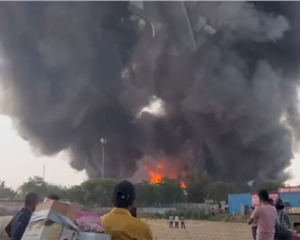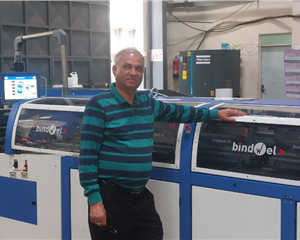Understanding the physicality of print is the key to success
Ahead of the annual Wan-Ifra India 2018 Conference, Manfred Werfel, deputy CEO, Wan-Ifra, sheds light on repositioning of printed newspapers worldwide, quality consciousness among Indian news publishers and how to tackle fake news, among others, in an eMail interview with Rahul Kumar
19 Sep 2018 | By Rahul Kumar
Rahul Kumar (RK): What’s new at the Wan-Ifra India Conference 2018?
Manfred Werfel (MW): In my view, the most important fact regarding the Wan-Ifra India Conference is that it has become an established annual meeting point of the South Asian news publishing industry with more than 400 participants. This year, there are many highlights in the programme. Among them, the 2018 winner of the Golden Pen of Freedom award, Maria A Ressa, CEO and executive editor of Rappler, Philippines, will share her experiences in Hyderabad.
I am also looking forward to the South Asian Digital Media Awards presentation as well as the presentation of the successful participants in the International Color Quality Club (ICQC) 2018–2020 competition and the new members of the Wan-Ifra Star Club, the hall of fame of excellent printers worldwide.
RK: At the conference, you have a topic, ‘Future of news media companies.’ What do you think the future holds?
MW: While newspaper circulation is declining in saturated markets, circulation is growing in Asia, especially India. Global circulation is growing by around 5% every year and more than 90% of global newspaper revenues are generated in print.
Current research by Wan-Ifra shows that readers prefer the printed product and spend more time reading in printed form than reading on the internet.
The printed newspaper is a sustainable product. Newsprint is largely based on recycled fibres and certified forestry. Printers use sustainability certificates from third parties, especially in South Asia.
After all, the printed newspaper is an innovative product. Many newspaper publishers combine technology and creativity to surprise their customers with innovative forms of advertising and product innovations.
RK: Defying odds, printed newspapers have been a growth story for India. What would be your suggestions to maintain this momentum?
MW: Many Indian publishers encourage and promote creativity and innovative formats. This is one of the keys for success. As long as you understand the basic benefits of each publishing format, you will be able to develop it successfully. The basic benefit of print is its physicality. Print is a physical medium. You can modify the substrate, for example fold it, punch it or cut it. You can combine it with other materials, for example sensors, labels, and product samples. You can use print to link to digital media with the help of codes or augmented reality. You can even embed sound and video chips in the printed newspaper.
The deep understanding of the unique selling propositions of print enables publishers to maintain the momentum.
RK: How would you rate Indian newspapers compared to Western newspapers in terms of print quality?
MW: When Wan-Ifra started the International Color Quality Club in 1994, it was an almost purely European project. Then it quickly gained the interest of North American printers who participated in large numbers during the late 90s and in the beginning of the new century. Later, Middle East and Asian participation grew. Also, many Latin American printers participated. And this year – for the first time – the participation from India is larger than that from Europe.
So, you can say that print quality awareness has moved from West to East. Indian newspaper print quality is among the highest worldwide. Indian newspaper printers demonstrate that constant high quality is a matter of the mindset and the organisation of people rather than an automatic result of using the latest technology. Process control and knowledge are more important for print quality than running highly automated systems and presses.
RK: The key seems to be innovation, and it will come with smart utilisation of technology. How do you think Wan-Ifra can help spread awareness about innovation and technology?
MW: The World Printers Forum of Wan-Ifra has launched new Print Innovation Awards this year. The idea behind the award is to promote the world’s most innovative print advertisings and products of newspaper and magazine publishers.
We do this because we are aware there is a huge potential for innovation in the printed product. Interestingly, this potential will even grow in future with the development of technology, such as electronic sensors and micro communication devices.
But it’s not only about the application of technology, it’s also about human creativity and design when you talk about innovation in print.
RK: We talk about big data and reader engagement always in terms of digital distribution of news. Do you think we can use these tools to promote print as well?
MW: Our latest report on Time Spent Reading News Brands, which will be published in the beginning of October 2018, shows that the engagement of print readers tends to be by far higher than of digital readers.
The author shows that “of the time spent with one large regional and seven national UK news brands by their British audiences in 2016, 86% was still in print with just 14% online”. His investigation reveals a major difference in the attention of online and print readers: “Readers of newspapers’ weekday print editions spend an average of 40 minutes with each issue, whereas those same newspapers’ online editions are visited for less than 30 seconds per visitor per day.”
News publishers should never give away their valuable products for free, neither in print, nor in digital. They have to charge for high-quality news and background information. But yes, they should use the knowledge about their readers and users to market their products. This includes big data technology reaching out to potential new and existing customers to attract and retain them.
RK: The latest technology buzzword is blockchain. How do you think blockchain could help newspaper publishers?
MW:By storing data in a blockchain based on one another, it cannot be changed subsequently without damaging the integrity of the overall system. This makes the manipulation of data considerably more difficult. Blockchain technology is currently used for so-called digital currencies, like Bitcoin.
But it could also be used in the future to secure any other security-critical operations of software processes. Since confidential information is stored and no element of the blockchain can be deleted without invalidating it, the individual entries are encrypted. Instead of deleting the entries from the blockchain, the cryptographic key can then be deleted to make the data permanently unreadable.
Since the implementation of blockchains and a suitable cryptographic infrastructure is currently very complex and expensive due to the lack of easy to use implementations, the use is only recommended for information requiring special protection. Examples of use include auditing systems for medical information, contracts and financial transactions of high financial value, military secrets, legislation and eVoting, security management of critical assets or data from large corporations.
In the long-term, you can also imagine auditing systems that protect news and reports from being falsified or modified without permission, making it much more difficult to spread fake news.
RK: Yes, fake news is a real concern. How to you think a forum like Wan-Ifra could help? What are the steps you have taken to protect journalism?
MW: Press freedom is the core of Wan-Ifra’s activities. The Golden Pen of Freedom is an annual award to recognise the outstanding action, in writing or deed, of an individual, a group or an institution in the cause of press freedom. Every year, on 3 May we celebrate World Press Freedom Day.
Wan-Ifra’s Media Development projects run parallel to its Press Freedom work, promoting sound business practices, applying cutting edge development techniques and delivering successful support projects in coordination with local experts, journalists, editors and media owners around the world.
As an integral element of Wan-Ifra’s pioneering Media Development programme, executive twinning – the partnering of senior media professionals from news organisations in non-competing markets – has produced a number of successful business and development opportunities across Asia, Africa and the Middle East.
The Women in News Programme seeks to benefit the newspaper industries of Botswana, Namibia and Zambia by equipping future leaders with the skills and capabilities required to promote the longevity of their respective companies.
The Media Professionals Programme provides media professionals with personalised, high-impact leadership development opportunities, supported by local and regional experts. It equips them with sustainable strategies, skills and support networks to advance their careers and contribute to the growth of strong local media enterprises.
The Media Professionals Programme has welcomed participants from South East Asia and the Middle East and North Africa.
There are many other programmes as well and we encourage interested readers to check the website wan-ifra.org for details.














 See All
See All